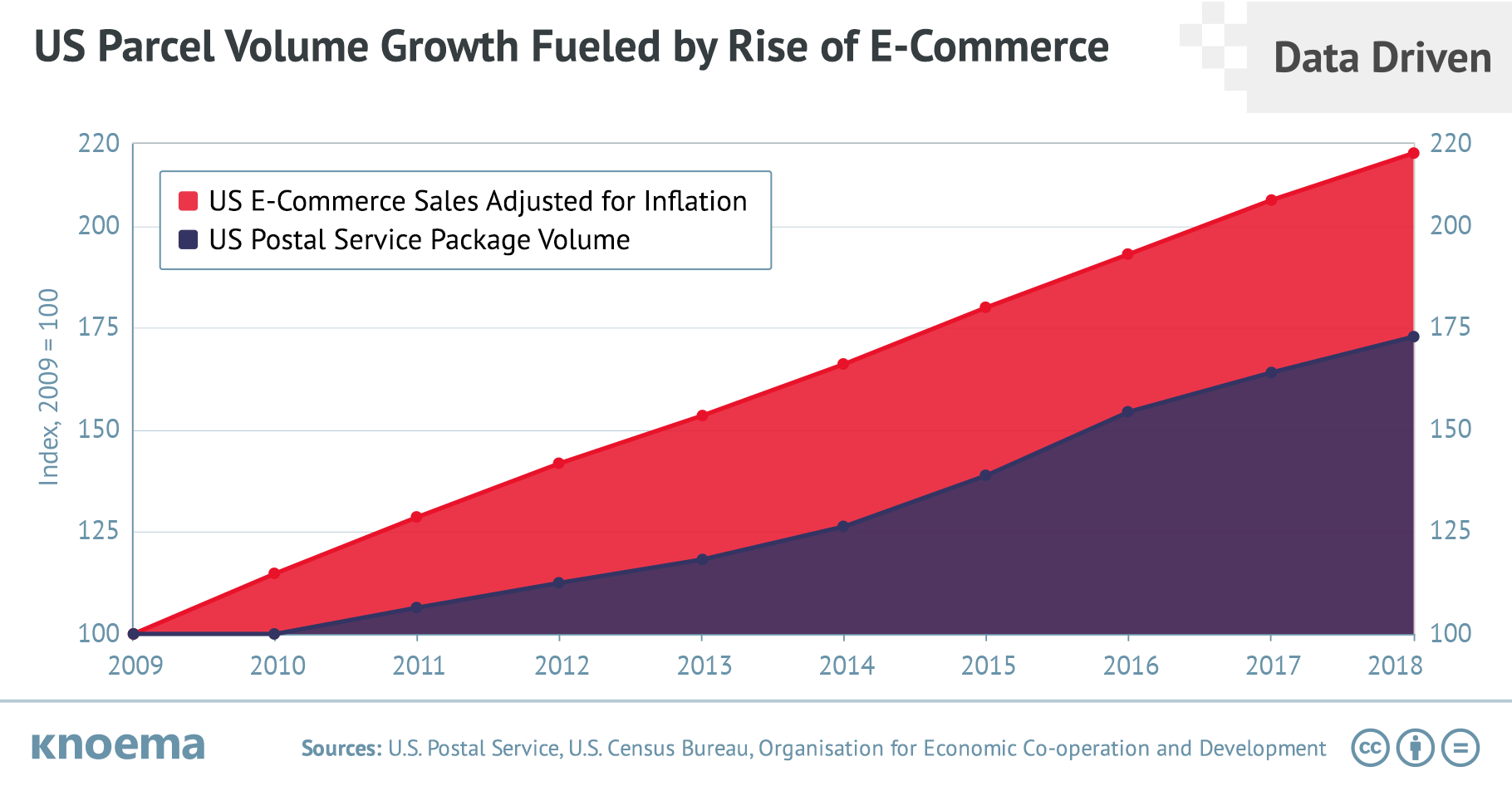E-Commerce Prompting Innovation by Traditional Postal Services
Throughout modern history the postal industry has played a role in connecting people, businesses, and governments around the world. Today we’re witnessing a decline and reinvention in the traditional mail delivery business as fast (and in some cases free) e-commerce options emerge.
- The Office for National Statistics for the UK reported that online sales made up 18 percent of total retail sales nationally during 2018. High growth rates were also reported in research from IMRG and Capgemini, which found that the value of UK online retail sales in January 2018 increased by 13.9 percent year-on-year.
- In the US, the share of online retail sales made up 10.2 percent of total retail sales in the 1st quarter of 2019, which is 6.4 percentage points higher than a decade ago, according to the same report.
- According to the International Post Corporation (IPC) 2018 Global Postal Industry Report, in 2017, total revenue of the global postal sector grew 2.8 percent. Hidden within this figure is a growing discrepancy between mail and parcel delivery revenues, with mail revenue down by 2.3 percent and parcel revenue up by 11 percent. The total volume of parcel shipments grew even more steeply in 2017, jumping 14.3 percent.
International trade trends have compounded the effect of the growth and evolution of e-commerce as a substitute for conventional post. More than 38 percent of all cross-border parcels in 2017 originated in China, according to the IPC. In the UK, an impressive 40 percent of online shoppers made their most recent purchases directly from China, according to the same survey.
While these conditions stimulate competition among traditional commercial parcel companies and encourage product diversification strategies, improved service and investment in innovation appear to be critical to their future revenue streams.
- The United States Postal Service is a prime example not only because it is a traditional postal company but because of its considerable market and economic sway, given that it maintains the largest civilian vehicle fleet in the world — about 232,372 vehicles — and moves about 484.8 mail pieces daily. Facing weak revenue growth – roughly 3.8% since 2009 — and only a small relative stake in global parcel delivery, innovation in the form of self-driving mail delivery trucks is now in a pilot phase to reduce operating costs. If successful, Americans may one day encounter self-driving postal trucks in their neighborhoods instead of the usual mail carrier.
Связанные Insights от Knoema
United States: E-Commerce and the Retail Sector
Electronic commerce, aka e-commerce, was introduced more than 50 years ago to share financial or business documents from one company to another. Today, with the spread of the Internet and retail giants such as eBay and Amazon, online shopping is probably what comes to mind for most people when they hear e-commerce mentioned. According to the US Census Bureau, e-commerce retail sales in 2000 were valued at $27.6 billion. By 2016, e-commerce grew more than 1,300 percent to over $390 billion. The US Census Bureau is one of many agencies now actively tracking e-commerce transactions,...
